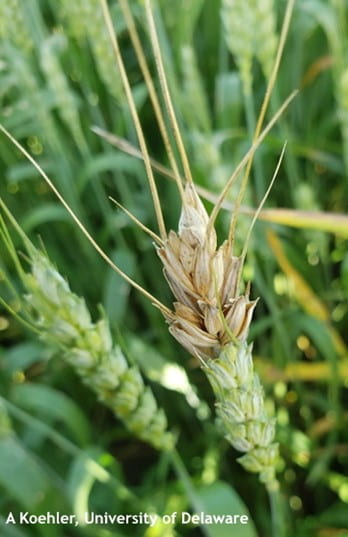Alyssa Koehler, Extension Field Crops Pathologist; akoehler@udel.edu
We are now about 2 weeks past flowering in wheat. Symptoms of Fusarium Head Blight (FHB) become visible by about 3 weeks post anthesis (Figure 1). So far, I have observed very little disease across the region. Barley heads have been very clean and we are anticipating that there will be low FHB incidence in wheat this year. We remain at low risk on the Fusarium Risk Tool (Figure 2). I have noted a few pustules of common rust starting to move in, but we are past the point where this would be of concern for potential yield loss.
Barley Yellow Dwarf virus is around and can be identified by purple to yellow discoloration of leaf tips (Figure 3). Leaf discoloration begins at the tip and the color and level of symptom development can vary based on variety, weather, fertility, and a number of other factors. In wheat, early infections are typically associated with more stunting and red-purple to yellow leaves, while later infections tend to have yellow flag leaves without stunting. BYDV is transmitted by aphids, with most infection occurring in the fall and early winter. Early infection is more damaging than infection of mature plants.



